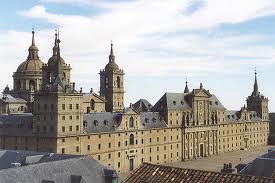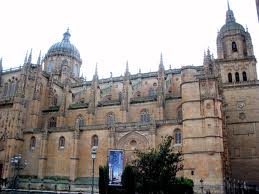Churrigueresque Architecture
Unlike many expressions of Baroque architecture in the continent, Spanish Baroque, dominated by the imposing figure of Juan de Herrera and his epoch-defining monastery of El Escorial, was relatively refrained in appearance, maintaining a more unified style and portraying more composure than Counter-Reformation architecture in the rest of the continent. Nevertheless, the next progression, which led to Rococo in France, for instance, had its very own life in Spain in the shape of the Churrigueresque.
The precepts established by religious orders, primarily the Jesuits, as means to express the resolutions of the church in the Council of Trent and the changes adopted through the Counter-Reformation were meant to give a more humane impression of the church at large, incorporating emotion to the classicist rigidity of the Renaissance through broken lines and incomplete elements.

The natural progression that ensued took the architecture of the XVII century from the conscious search of more natural designs, as set out in the paradigmatic style of the Church of the Gesù in Rome, to the playful excesses that proliferated during the reign of Louis XV in France. This time, however, no European model was required for the Spanish establishment to adapt to its fashion, as the influence of José de Churriguera was felt long before the emergence of Rococo in the continent.
Initially conceived as a decorative technique used primarily in the fashioning of altar pieces and other such architectural compositions, José de Churriguera is widely credited as its forefather and inventor. A good example of his early work, dating from 1689, is the Chapel of the Sacristy in Segovia Cathedral, which displays a rich use of floral patterns combined with a celestial theme where cherubs and angels enhance the exaltation of the divinity, framed within a sumptuous golden architectural design.
But José de Churriguera will likely be remembered for the development of a new urban zone in the area of Nuevo Baztan, next to Madrid. The work was conceived by Juan de Goyeneche, and the palace that bears his name stands out as one of the most significant blends of earlier Herrerism with Churrigueresque.
Built as a square with towers rising from the corners of the polygon, the palace is adjoined to the Church of St. Francis Xavier, bearing clear similarities to the rigid, almost military aesthetic proliferated by the Monastery of El Escorial.
However, by the time the Palace was built (1709-1716) the playfulness of Baroque elements had taken root in the Spanish taste, and consequently it was fitted with various aspects, starting with its fake columns, that break with the straight lines of the whole. Meanwhile, the inside of the church displays all the bashfulness of the high baroque, with sumptuous decorations that come to their climax with the red and black altar piece dedicated to the patron saint of the church.

Churriguera’s style was also developed by José’s brothers, and indeed, some of the grandest architectural examples of the artistic tendency were conceived by Alberto Churriguera. Ten years his brother’s junior, Alberto was drafted by José to help him out in the Nuevo Baztan project. However, it was not until he was appointed as master builder of the New Cathedral of Salamanca that Alberto achieved all the fulfilment of his potential.
Following on the steps of his other brother, Joaquín, who had acted as master builder in Salamanca until his death in 1724, completing among other structures the impressive cupola of the building, Alberto then took over and completed much of his brother’s unfinished work, including the chorus of the cathedral.
Alberto’s most distinctive legacy, however, would not be connected to the cathedral, but rather to the civil realm of the city of Salmanca, where still today everyone newly arrived, comes in contact with his creation in the Plaza Mayor.
Churrigueresque style, a dominating tendency in the dying days of the XVII century and the first half of the XVIII, would carry on in the hands of Nicolás Churriguera, son to José, and Manuel de Larra Churriguera, son to the three brothers’ sister, thus making complete a true dynasty of architects that defined their time beyond doubt.
